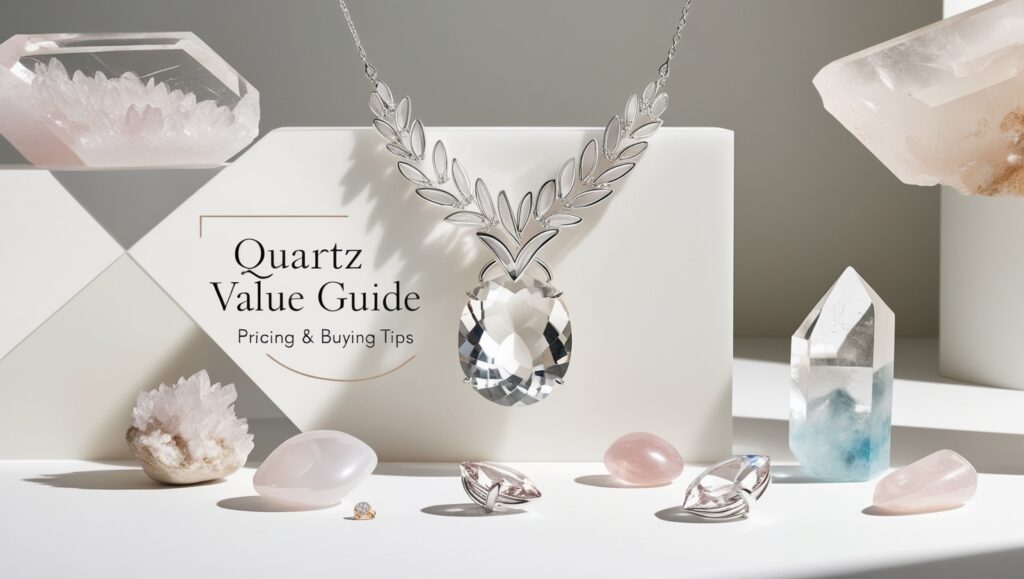
Imagine holding a fortune in your hands, sparkling and cool to the touch. That’s the power of quartz – a gem that’s not just pretty, but potentially profitable.
Did you know that some quartz pieces have sold for hundreds of thousands of dollars? Or that the smartphone in your pocket likely relies on quartz to function? From dazzling amethysts to clear crystals that power our tech, quartz is a chameleon in the gem world.
Whether you’re a jewelry lover, a savvy investor, or simply curious about the glittering world of gemstones, this guide is your ticket to unlocking the secrets of quartz.
In this article, you’ll discover:
- How to spot a quartz gem that could be worth a small fortune.
- The insider tricks to buying quartz like a pro.
- Why your next big investment might be hiding in a rock shop.
Ready to turn your eye for beauty into a profitable skill? Let’s dive into the fascinating world of quartz, where science meets luxury, and every crystal tells a story. By the end of this guide, you’ll see these common stones in a whole new light – and might just find yourself on the path to becoming a quartz connoisseur.
Buckle up, gem enthusiasts and curious readers alike – your journey into the lucrative world of quartz starts now!
Chemical Composition and Formation

At its core, quartz (SiO2) is silicon dioxide. Its formation occurs over millions of years under specific geological conditions, resulting in a wide array of varieties and colors. The fascinating journey of quartz begins deep within the Earth, where heat and pressure work together to create these stunning crystals.
you ma also read about Meteorite Value Guide: Worth & Investment Tips
Varieties of Quartz
Quartz comes in two main categories:
1. Crystalline quartz:
- Amethyst (purple)
- Citrine (yellow to orange)
- Rose quartz (pink)
- Clear quartz (colorless)
- Smoky quartz (brown to black)
- Milky quartz (white)
- Prasiolite (green)
2. Cryptocrystalline quartz:
- Chalcedony
- Agate
- Jasper
- Onyx
- Carnelian
Each variety has its unique characteristics, contributing to its value and desirability in the market. For instance, amethyst, with its regal purple hue, has been prized for centuries and was once considered as valuable as rubies and emeralds.
Citrine, often called the “merchant’s stone,” is believed to bring prosperity and is popular in business-related jewelry.
Unique Properties and Uses
Quartz isn’t just pretty to look at; it’s incredibly useful too. Here’s why:
- Hardness: Ranking 7 on the Mohs scale, quartz is durable enough for everyday wear in jewelry.
- Piezoelectric properties: Quartz can generate an electric charge under pressure, making it valuable in the technology sector for things like watches, radios, and computers.
- Abundance: Its widespread availability makes it accessible for various applications, from jewelry to industrial uses.
- Optical properties: Some varieties of quartz, like rock crystal, are prized for their clarity and used in optical instruments.
- Metaphysical beliefs: Many people value quartz for its supposed healing and energy-focusing properties, although these claims are not scientifically proven.
Factors Influencing Quartz Value
When it comes to determining the value of quartz, several key factors come into play:
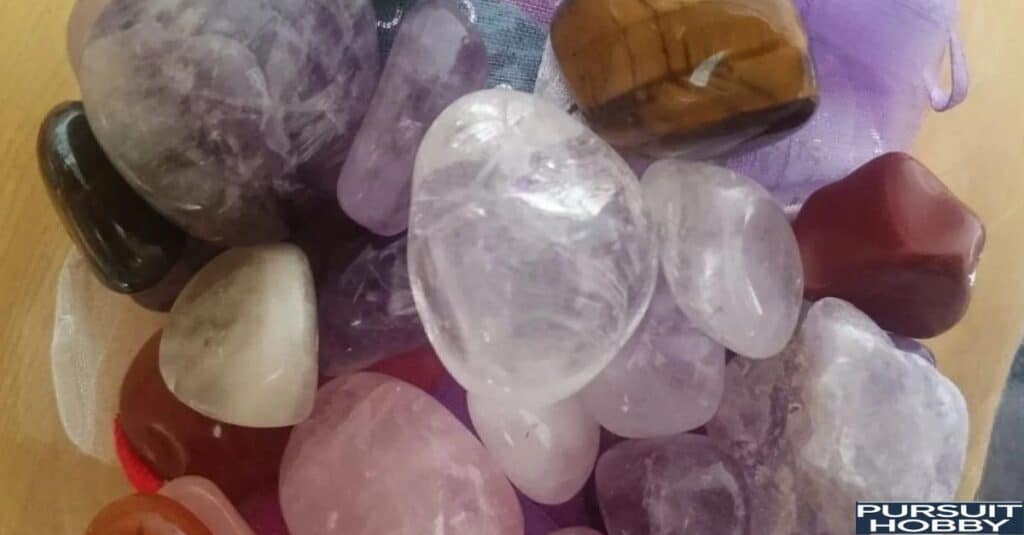
Color and Clarity
The color of quartz significantly impacts its value. Rare types of quartz, such as high-quality amethyst or citrine, can command premium prices. Clear, transparent specimens are often prized for their purity.
| Quartz Color | Relative Value | Notable Characteristics |
|---|---|---|
| Deep purple amethyst | High | Intense, even color |
| Natural citrine | High | Rare, golden hue |
| Rose quartz | Medium | Soft pink, often cloudy |
| Clear quartz | Varies | Prized for clarity |
| Smoky quartz | Medium | Range from light to very dark |
| Blue quartz | High | Rare, caused by inclusions |
| Rutilated quartz | High | Clear quartz with golden needle-like inclusions |
Clarity refers to the presence of inclusions or imperfections within the stone. Generally, clearer specimens are more valuable, but some inclusions can create unique patterns that increase value. For example, rutilated quartz, which contains needle-like inclusions of rutile, can be highly prized for its unique appearance.
you may also read about Obsidian Value Guide: Understanding Worth & Grading
Size and Carat Weight
Larger quartz specimens, particularly those of gem-quality, tend to be more valuable. However, size alone doesn’t determine value; quality is equally important. A small, flawless piece of gem-quality quartz may be worth more than a larger specimen with significant imperfections.
For reference:
- A high-quality amethyst of 10-20 carats can range from $200 to $1000 or more.
- Exceptional citrine specimens over 20 carats might fetch $1000 to $4000 per carat.
Cut and Polish
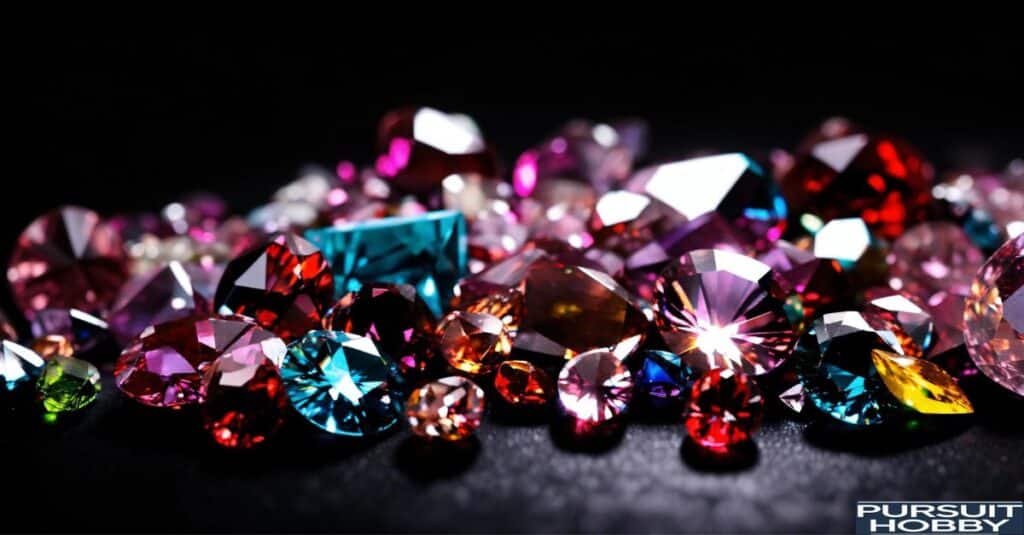
The skill of the lapidary in cutting and polishing quartz can significantly enhance its value. Well-cut quartz maximizes light reflection and showcases the stone’s best features. Popular cuts for quartz include:
- Brilliant cut: Maximizes sparkle and light return
- Cabochon: Smooth, rounded top, often used for opaque or translucent quartz
- Faceted cuts: Various geometric shapes that enhance the stone’s natural properties
A masterfully cut quartz can increase in value by 50% or more compared to a poorly cut stone of the same quality.
Rarity and Origin
Some quartz varieties are rarer than others, affecting their value. For instance, natural citrine is less common and more valuable than heat-treated amethyst (which produces a similar color).
The origin of the quartz can also play a role. Certain mines are known for producing high-quality specimens, which can increase value. For example:
- Amethyst from Uruguay’s Artigas region is known for its deep, saturated color.
- Rose quartz from Brazil’s Minas Gerais state is prized for its clarity and color.
- Herkimer diamonds (a type of quartz crystal) from Herkimer County, New York, are valued for their exceptional clarity and unique double-terminated crystal structure.
Market Demand and Trends
Like any commodity, quartz pricing is influenced by market demand. Current trends in jewelry design or technological applications can drive up prices for specific types of quartz. For instance:
- The rise of bohemian and natural-inspired jewelry has increased demand for raw quartz crystals.
- Growing interest in alternative healing practices has boosted the market for clear quartz and other varieties believed to have metaphysical properties.
- The tech industry’s demand for high-purity quartz for semiconductor manufacturing has impacted prices in that sector.
Quartz Grading Systems
Understanding how quartz is graded is crucial for both buyers and sellers. While there isn’t a universally standardized grading system for quartz like there is for diamonds, several recognized scales exist.
GIA (Gemological Institute of America) Standards
The GIA, a respected authority in gemology, provides guidelines for grading colored stones, including quartz. They consider factors such as:
- Color: Hue, tone, and saturation
- Clarity: Type, size, and number of inclusions
- Cut: Quality of proportions, symmetry, and polish
- Carat weight: Size of the stone
While the GIA doesn’t issue grading reports for quartz as they do for diamonds, their standards are widely respected in the industry.
Other Recognized Grading Scales
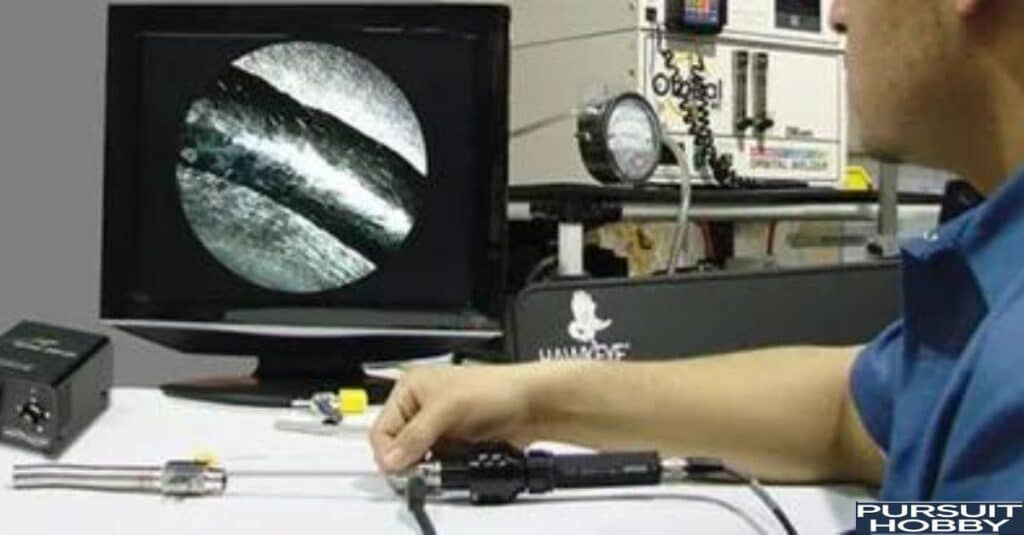
Some organizations have developed their own scales for specific types of quartz. For example:
- The American Gem Trade Association (AGTA) has guidelines for grading amethyst, focusing on color intensity and zoning.
- The International Colored Gemstone Association (ICA) provides general guidelines for colored gemstones, including quartz varieties.
Importance of Certification
When dealing with high-value quartz specimens, certification from a reputable gemological laboratory can provide assurance of quality and authenticity. This is particularly important for rare or expensive pieces. A certificate typically includes:
- Identification of the stone
- Weight and measurements
- Description of color and clarity
Any Treatments or Enhancements Detected
“A certified gem is like a book with a trusted review – it gives you confidence in what you’re getting.” – Gemologist Sarah Thompson
While not all quartz needs certification, it’s worth considering for high-value pieces, especially those over $1000.
Pricing Structures in the Quartz Market
The quartz market is diverse, with prices varying widely based on the type and quality of the material. Let’s break down the pricing structure:
Raw Quartz vs. Finished Gemstones
Raw quartz, straight from the mine, is generally less expensive than cut and polished gemstones. However, high-quality raw specimens can still command significant prices, especially if they’re large or have unique formations.
For example:
- A rough amethyst geode might sell for $50-$500 depending on size and quality.
- A cut and polished amethyst gemstone of similar weight could fetch $100-$1000 or more.
Factors Affecting Wholesale Prices
Wholesale quartz prices are influenced by:
- Mining costs: Including labor, equipment, and regulatory compliance
- Processing and transportation: Cutting, polishing, and shipping expenses
- Market demand: Current trends in jewelry and industrial applications
- Quality of the material: Higher grade quartz commands premium prices
Retail Markup and Pricing Strategies
Retail prices for quartz can vary significantly. Luxury brands often apply substantial markups, particularly for high-end jewelry pieces featuring gem-quality quartz. However, more affordable options are widely available, making quartz accessible to a broad range of consumers.
Typical retail markups can range from 100% to 300% or more, depending on the retailer and the product. For example:
- A wholesale quartz crystal point priced at $10 might retail for $30-$50.
- A high-end designer ring featuring a premium amethyst could retail for 3-5 times its wholesale cost.
Regional Price Variations
Quartz prices can vary by region due to factors like:
- Local supply and demand
- Import/export regulations
- Cultural preferences
- Economic conditions
For example, amethyst might be more expensive in regions where it’s considered a traditional birthstone. Similarly, clear quartz used in technology might command higher prices in areas with a strong tech industry presence.
Investment-Grade Quartz
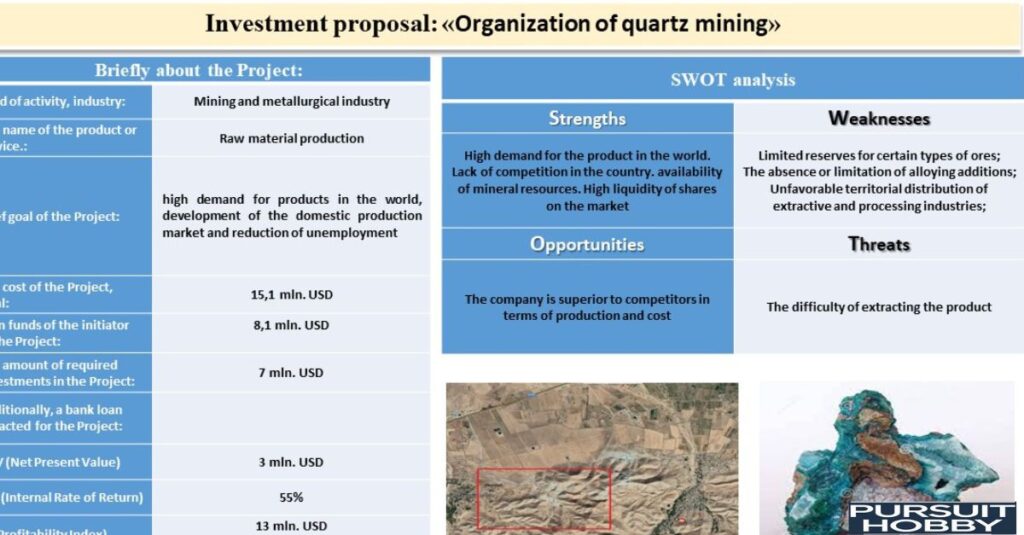
While not as well-known as an investment vehicle as some other gemstones, certain types of quartz can be considered investment-grade.
Characteristics of High-Value Quartz
Investment-grade quartz typically exhibits:
- Exceptional color and clarity
- Large size: Typically over 10 carats for faceted gems
- Rare variety or origin
- Historical significance or provenance
- Minimal treatments or enhancements
Notable Sales and Record Prices
Some quartz specimens have fetched impressive prices at auction:
- In 2015, a 10,363-carat flawless quartz sphere sold for $550,000 at Bonhams.
- A pair of amethyst geodes from Uruguay sold for $427,500 at Christie’s in 2021.
- In 2019, a 5,655-carat “La Peseta” amethyst from Uruguay sold for $70,000.

Quartz as a Long-Term Investment
While quartz may not appreciate as rapidly as some other gemstones, certain varieties have shown steady value increases over time. Factors to consider for long-term investment include:
- Rarity: Focus on uncommon varieties or exceptional specimens.
- Quality: Opt for the highest grade within your budget.
- Historical significance: Pieces with provenance often hold value better.
- Market trends: Stay informed about emerging preferences in jewelry and technology.
Case Study: The Rise of Rose Quartz
In the past decade, rose quartz has seen a significant increase in popularity and value. Factors contributing to this include:
- Growing interest in “Millennial Pink” in fashion and design
- Increased use in skincare products and tools
- Rising popularity in metaphysical and wellness circles
As a result, high-quality rose quartz specimens have seen price increases of 20-30% between 2010 and 2020.
Buying Quartz: A Smart Consumer’s Guide
Whether you’re looking to purchase quartz for personal enjoyment or as an investment, here are some tips to guide your buying process:
Identifying Reputable Sellers
- Look for sellers with established reputations and positive reviews.
- Check for memberships in professional organizations like the International Colored Gemstone Association (ICA).
- Ensure the seller provides detailed information about their products and offers certifications for high-value pieces.
- Consider purchasing from specialized gem dealers or reputable auction houses for high-end pieces.
Online vs. In-Person Purchases
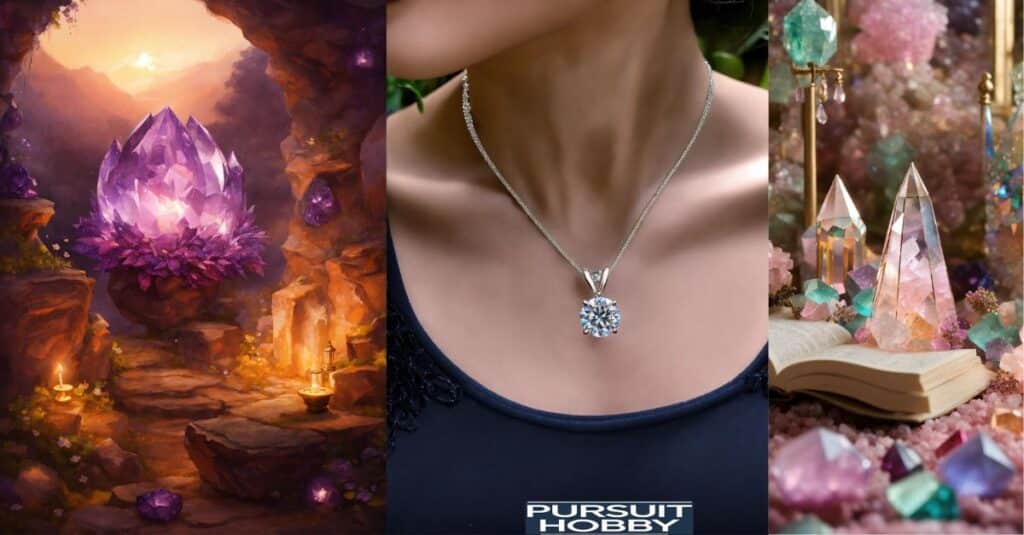
Pros of Online Buying:
- Wide selection
- Competitive pricing
- Convenience
- Access to international markets
Pros of In-Person Buying:
- Ability to inspect the quartz directly
- Immediate possession
- Personal service and expertise
- Opportunity to negotiate prices
When buying online, look for sellers who offer:
- High-resolution photos from multiple angles
- Detailed descriptions of the stone’s characteristics
- Certification for valuable pieces
- Secure payment options and buyer protection policies
Questions to Ask Before Buying
- Is this natural or treated quartz?
- What is the exact weight and dimensions?
- Are there any significant inclusions or flaws?
- Can you provide a certificate of authenticity?
- What is your return policy?
- How was the stone mined? (For ethical considerations)
- What is the stone’s origin?
- Has the stone undergone any treatments or enhancements?
- How should I care for this piece?
- Do you offer any guarantees on the stone’s quality?
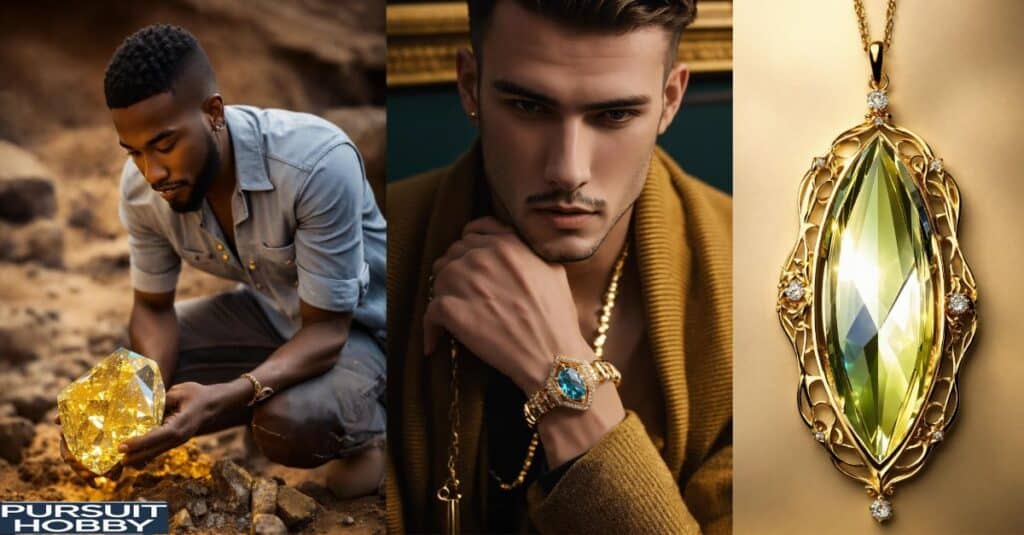
Red Flags and Common Scams
Be wary of:
- Prices that seem too good to be true
- Sellers unwilling to provide detailed information
- Claims of “investment-grade” without proper certification
- Pressure tactics to make a quick purchase
- Vague or inconsistent descriptions of the stone
- Reluctance to provide additional photos or information upon request
Common scams include:
- Selling synthetic or treated quartz as natural
- Misrepresenting the quality or origin of the stone
- Using misleading terms like “genuine” (which can apply to lab-created stones)
Caring for Your Quartz Investment
Proper care can help maintain the value and beauty of your quartz.
Proper Storage and Handling
- Store quartz pieces separately to avoid scratching.
- Keep them away from extreme temperatures and direct sunlight.
- Handle with clean, dry hands to avoid oil transfer.
- Use soft cloth or padded containers for storage.
- For large specimens, consider custom-made stands or display cases.
Cleaning and Maintenance
- Clean with mild soap and warm water.
- Use a soft brush for intricate settings.
- Avoid ultrasonic cleaners for quartz with inclusions or fractures.
- For valuable pieces, consider professional cleaning annually.
- Be cautious with heat-sensitive varieties like amethyst, which can fade if exposed to high temperatures.
Insurance Considerations
For valuable quartz pieces:
- Get a professional appraisal from a certified gemologist.
- Consider specialized jewelry insurance that covers loss, theft, and damage.
- Keep detailed records and photos of your collection.
- Update appraisals every 3-5 years to reflect current market values.
- For very high-value pieces, consider bank vault storage.
The Future of Quartz Markets
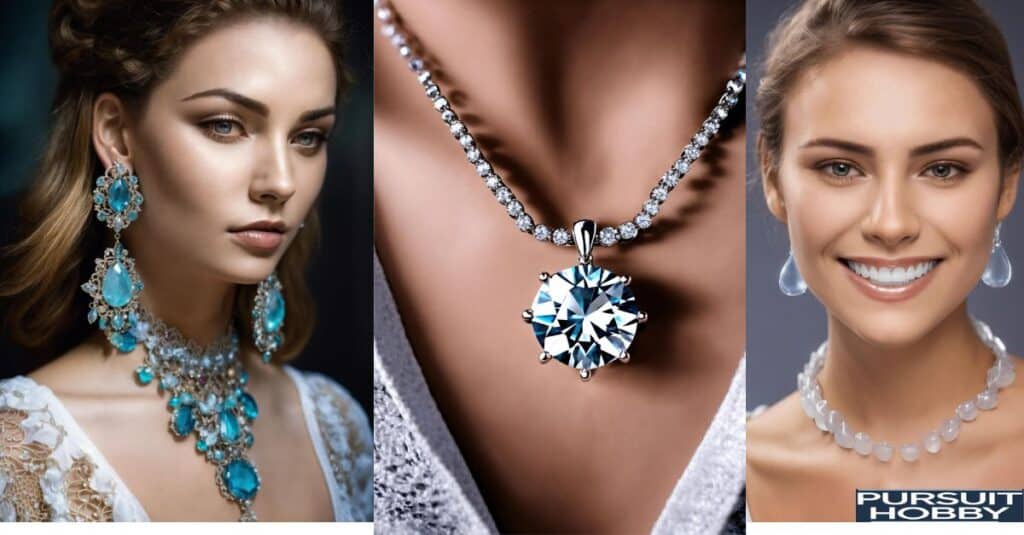
The quartz market continues to evolve, driven by both traditional and new applications.
Emerging Trends and Technologies
- Increased use of quartz in smart devices and wearable tech
- Growing interest in natural, untreated quartz specimens
- Rising demand for quartz in alternative healing and metaphysical practices
- Development of new cutting techniques to maximize brilliance and unique patterns
- Integration of quartz in high-tech applications like 5G networks and quantum computing
Sustainability and Ethical Sourcing
As consumers become more conscious of ethical issues:
- Demand for responsibly sourced quartz is increasing.
- Some mines are implementing more sustainable practices, including water conservation and land reclamation.
- Traceability is becoming a selling point for high-end quartz.
- Fair trade initiatives are emerging in the colored gemstone market, including quartz.
Predictions for Future Value and Demand
- Tech-grade crystals are likely to see increased demand due to technological advancements in semiconductors and telecommunications.
- Rare, high-quality natural quartz may appreciate in value as supplies diminish.
- The market for quartz countertops is expected to grow, potentially affecting raw material prices.
- Unique or unusual quartz varieties may see increased collector interest.
- The metaphysical market for quartz is expected to continue growing, potentially driving up prices for clear and rose quartz.
Expert Tips for Quartz Buyers and Collectors
Building a Diverse Quartz Collection
- Start with classic varieties like amethyst, citrine, and clear quartz.
- Gradually add rarer types or unique specimens.
- Consider collecting quartz from different global locations.
- Look for pieces with interesting inclusions or formations.
- Don’t overlook less common varieties like prasiolite or ametrine.
- Invest in a good loupe or magnifying glass to examine specimens closely.
Leveraging Market Fluctuations
- Stay informed about market trends and emerging varieties.
- Consider purchasing during off-peak seasons when prices may be lower.
- Be patient – sometimes waiting for the right piece at the right price pays off.
- Follow auction results to gauge market trends for high-end pieces.
- Consider buying rough material if you have connections with skilled lapidaries.
When to Buy and When to Sell
- Buy: When you find a piece that truly speaks to you or fits your collection goals.
- Sell: If market conditions are favorable or if your collecting focus has changed.
- Hold: During market downturns, unless you urgently need to liquidate.
“The key to successful quartz collecting is knowledge. The more you learn, the better equipped you’ll be to spot value and make informed decisions.” – Veteran quartz collector John Doe
Conclusion: Navigating the Quartz Market with Confidence
Quartz, with its myriad varieties and applications, offers something for everyone – from the casual jewelry enthusiast to the serious investor. By understanding the factors that influence quartz value and pricing, you can make informed decisions whether you’re buying a simple piece of quartz jewelry or investing in rare, gem-quality quartz.
Remember:
- Quality matters more than size alone.
- Certification is crucial for high-value pieces.
- Stay informed about market trends and emerging technologies.
- Care for your quartz properly to maintain its value.
- Consider the ethical implications of your purchases.
- Don’t be afraid to ask questions and seek expert opinions.
Armed with the knowledge from this guide, you’re now ready to explore this fascinating market with confidence and insight. Whether you’re a first-time buyer or a seasoned collector, the world of quartz awaits, full of sparkling possibilities and hidden treasures. Happy collecting!

Aley Noraa is an experienced blogger with a passion for sharing insightful and engaging content. With years of writing under her belt, Aley combines her expertise in various topics with a unique voice that resonates with readers. Her dedication to delivering valuable information and inspiring stories makes her a standout author on Pursuit Hobby. When she’s not writing, Aley enjoys exploring new hobbies and connecting with her audience.

